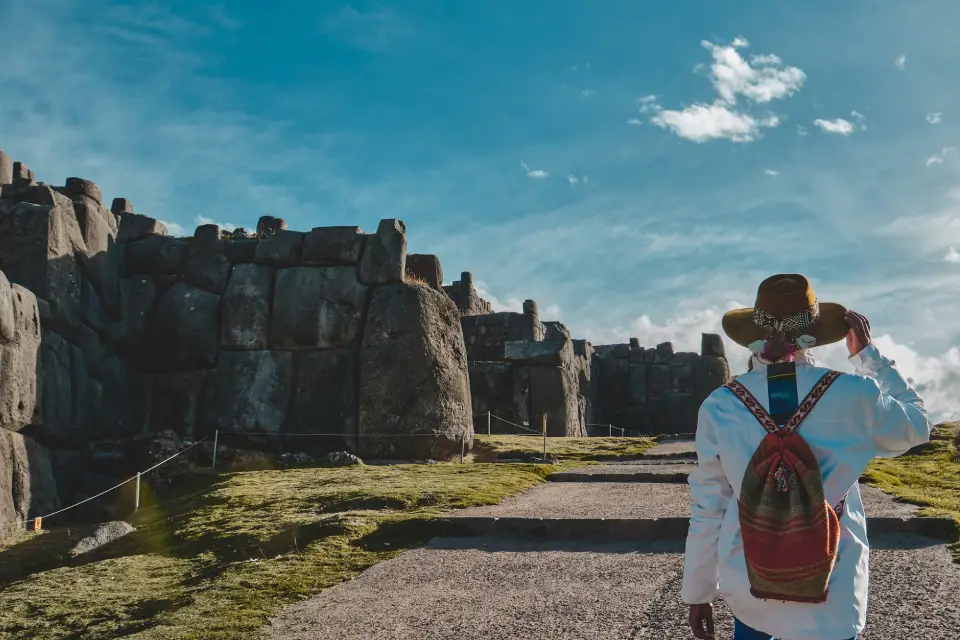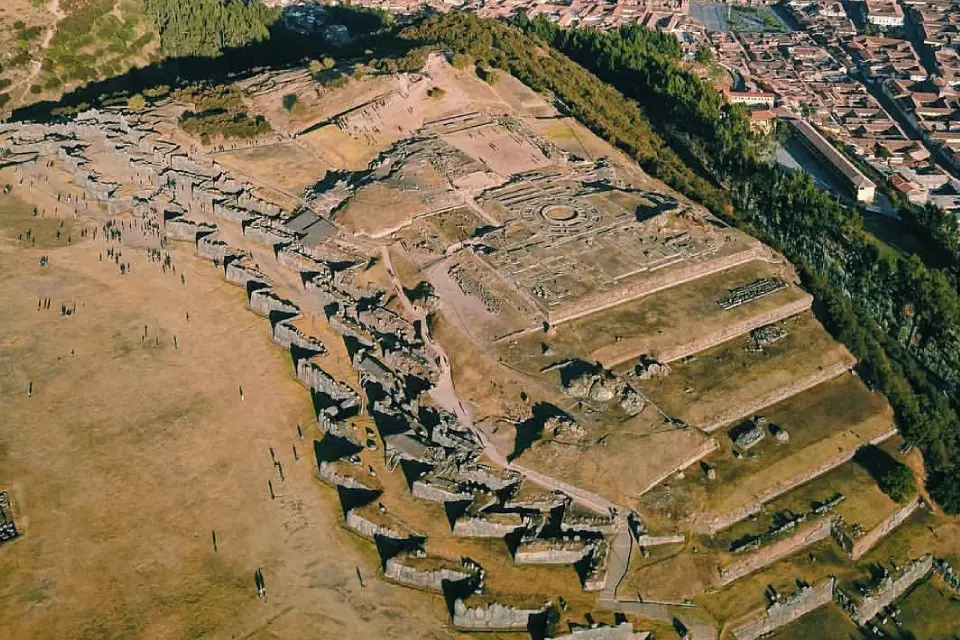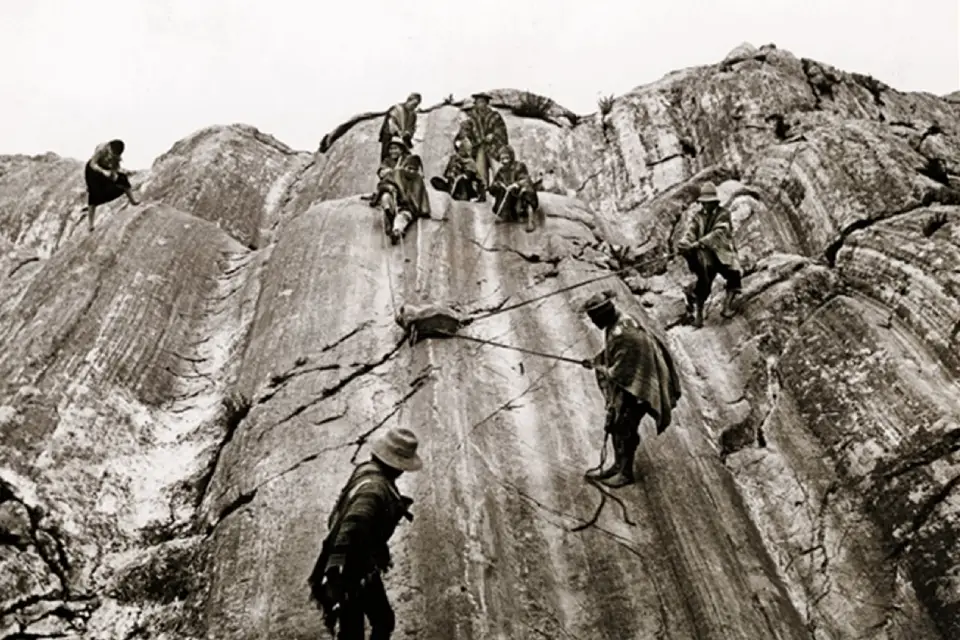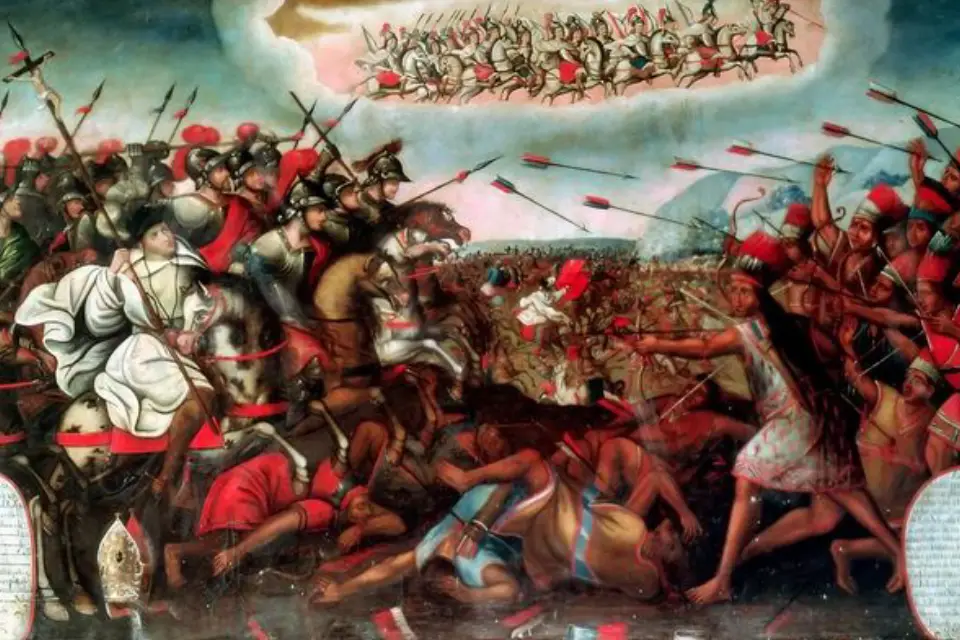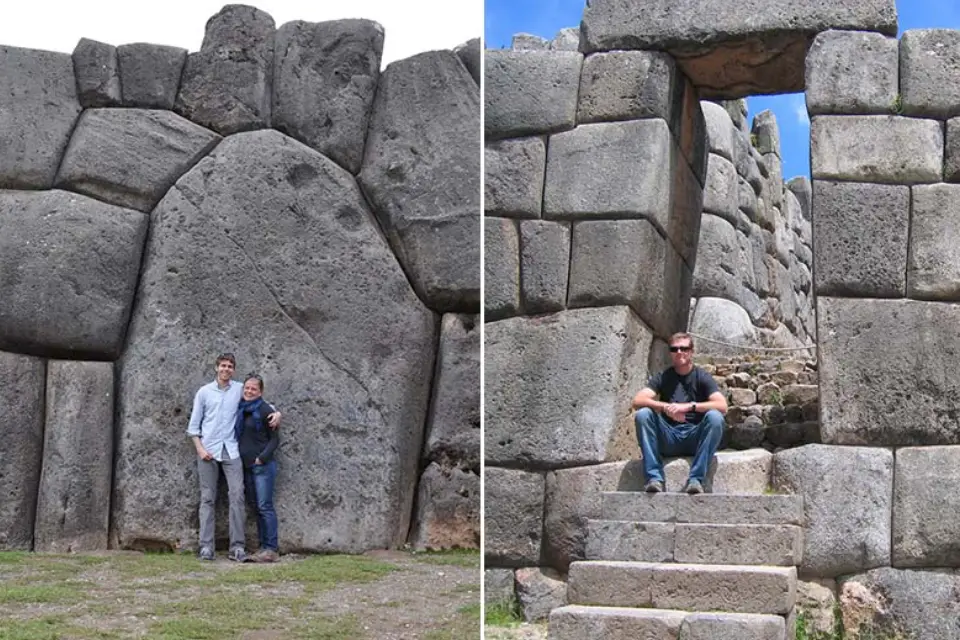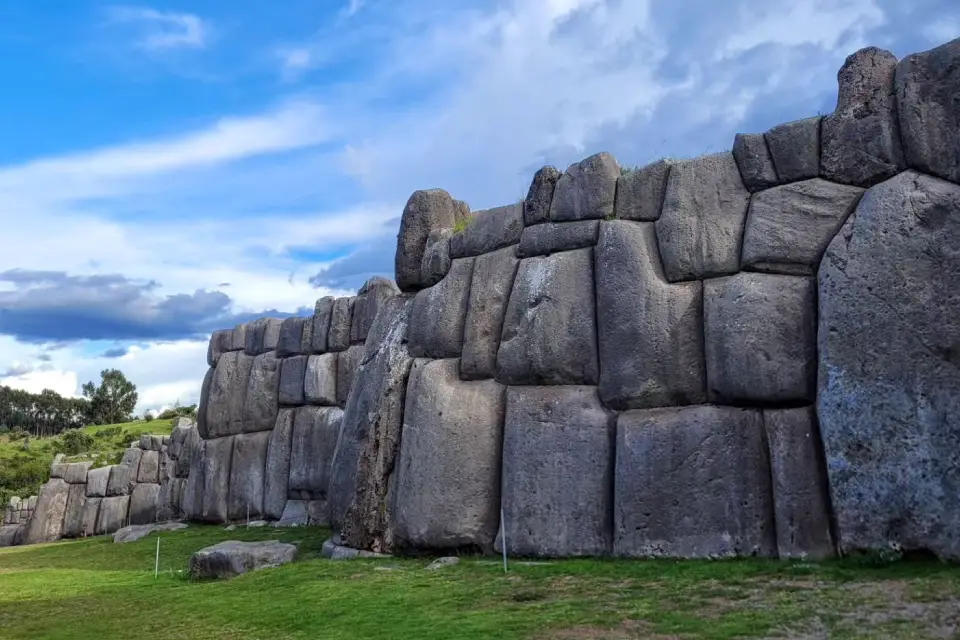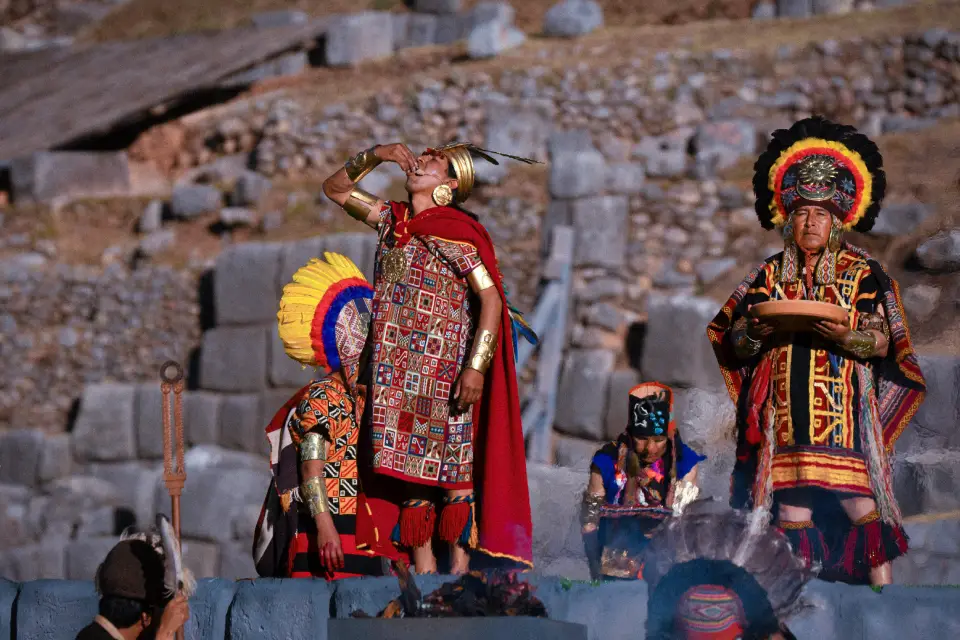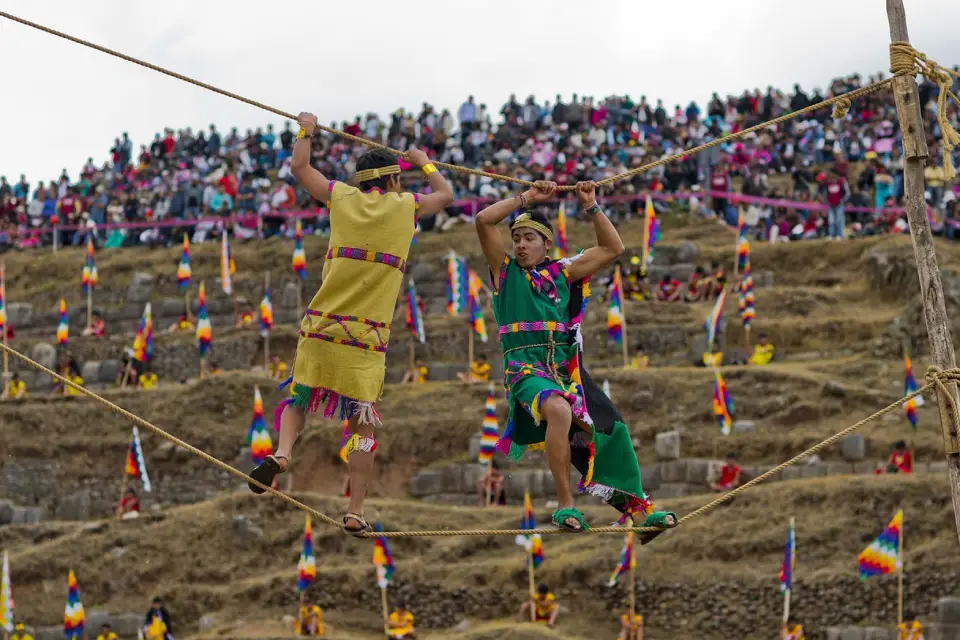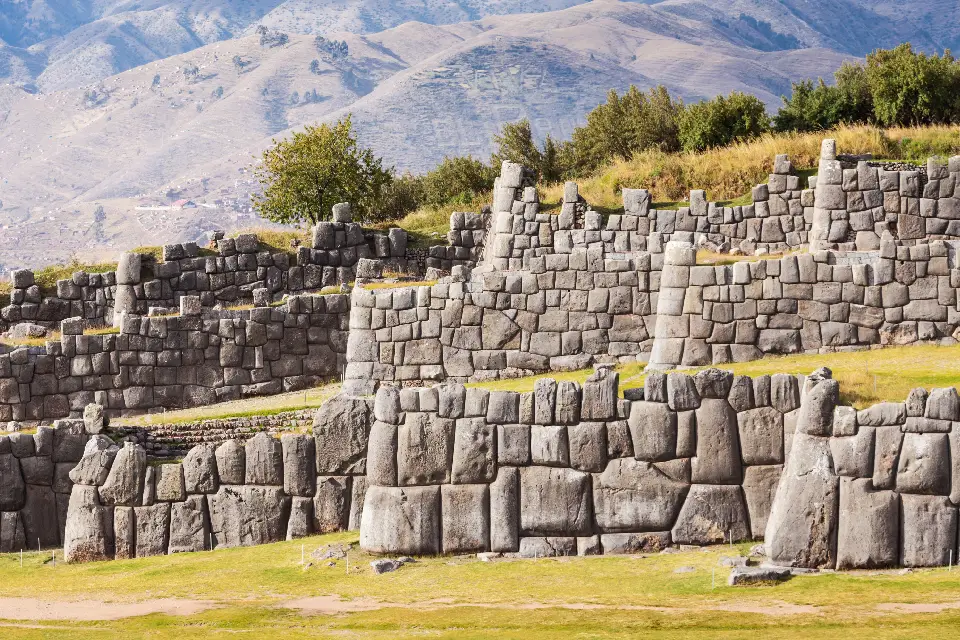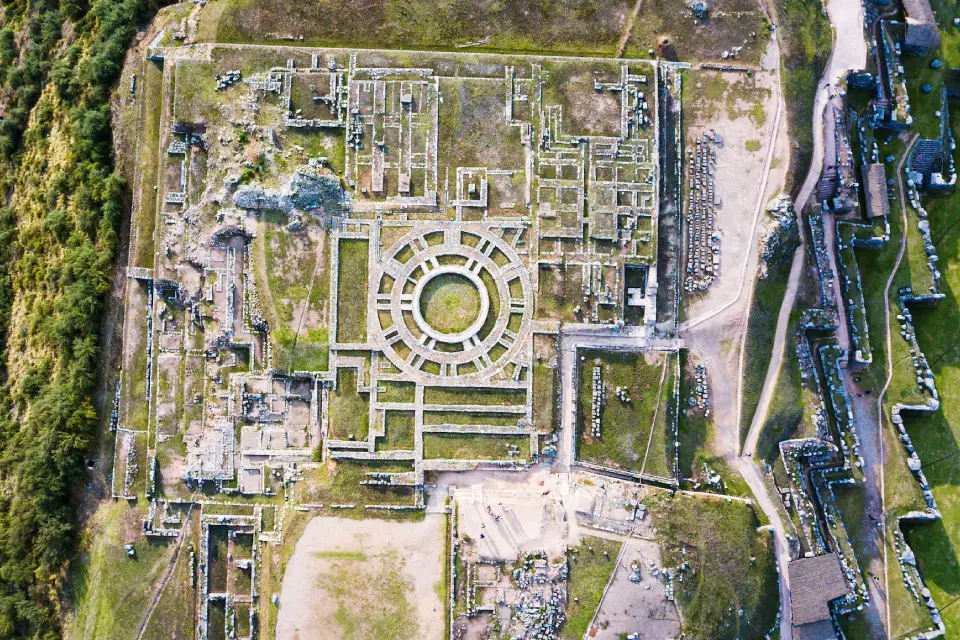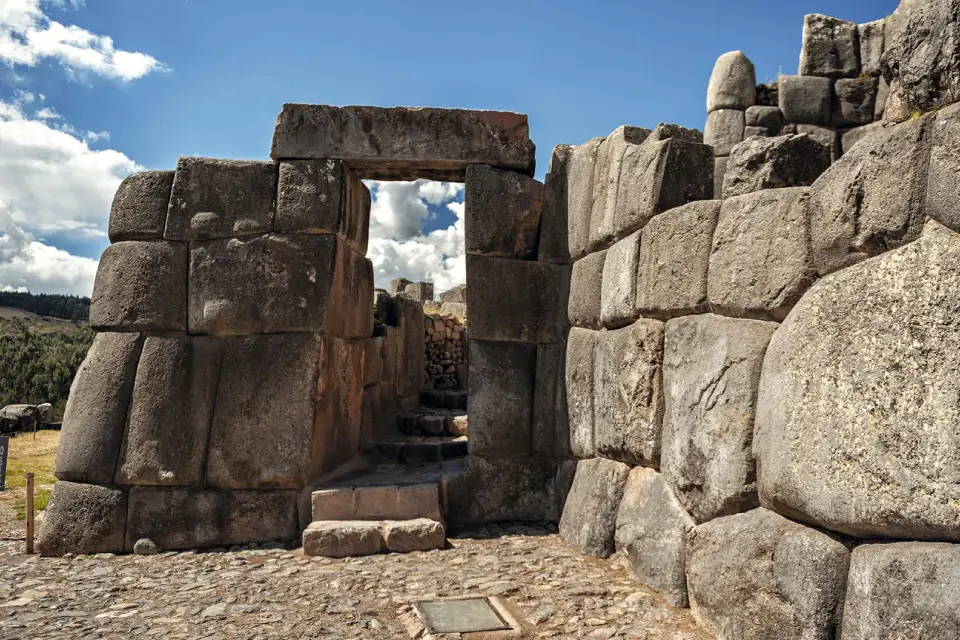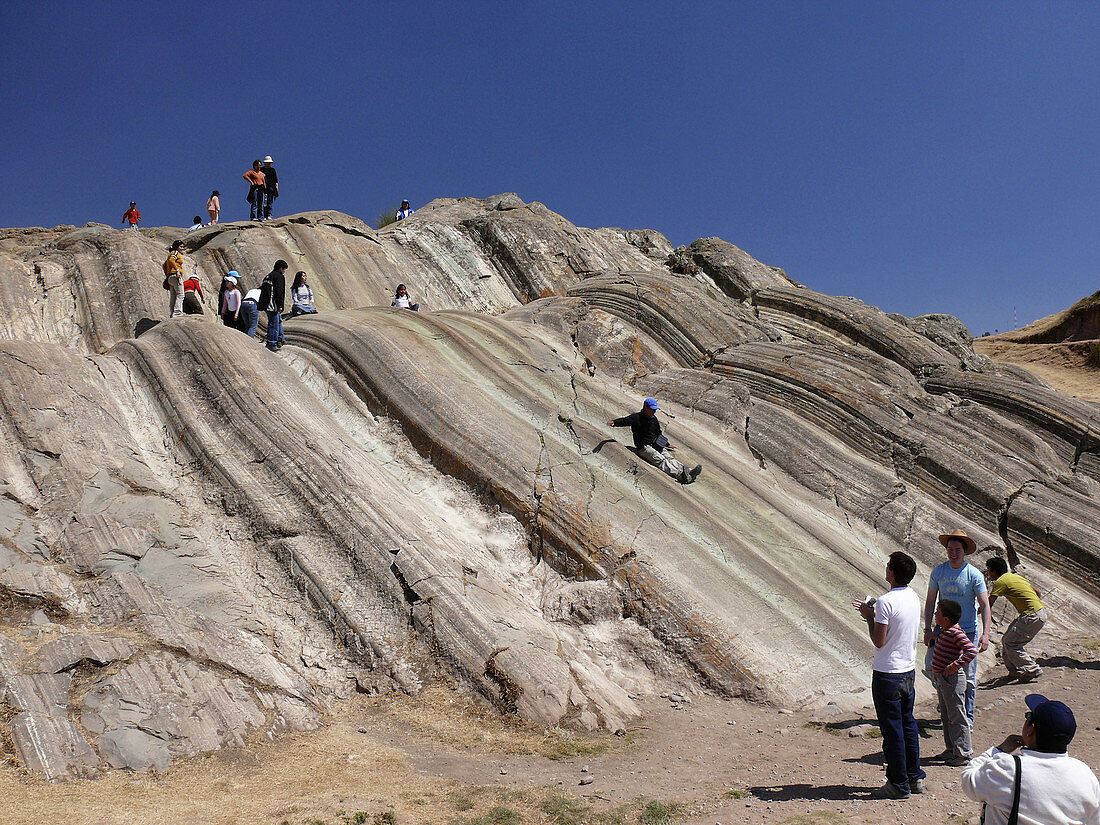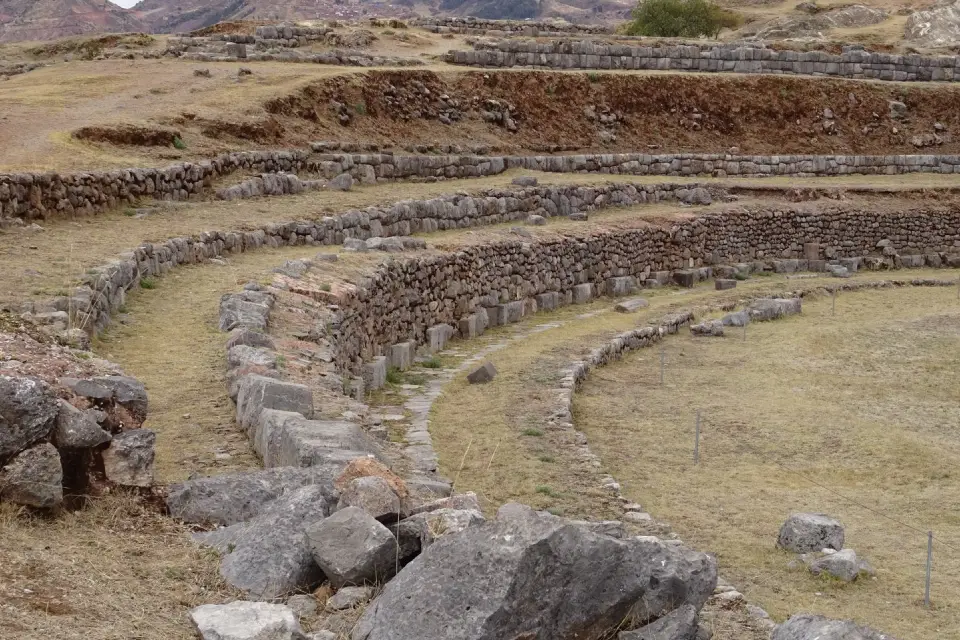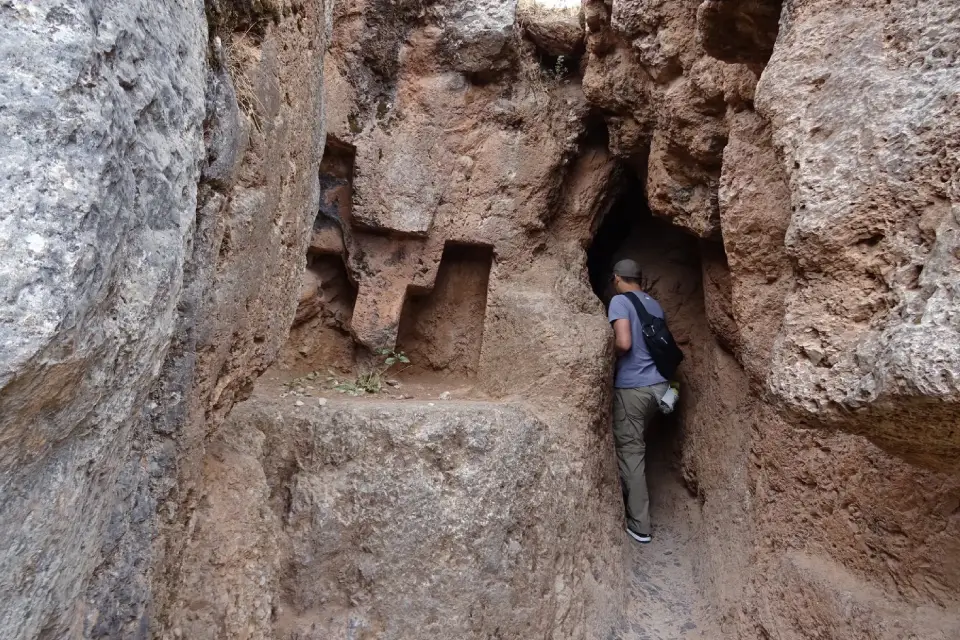¿Cómo lograron mover los incas piedras de hasta 200 toneladas sin tecnología moderna? Imagina una construcción tan perfecta que ni una hoja de papel cabe entre sus piedras. Eso es la Fortaleza de Sacsayhuamán, más que un sitio arqueológico, es uno de los complejos más asombrosos del Perú y América. Fue construido por el inca Pachacutec en el siglo XV, continuado por Huayna Cápac, siendo un testimonio arquitectónico de la civilización inca. Este sitio no solo fascina por sus estructuras monumentales, sino también por el misterio que rodea sus construcciones.
Explora Sacsayhuamán y descubre el legado incaico, cada muro y cada piedra cuentan una historia de fuerza y espiritualidad. En este blog te enseñamos todo lo que necesitas saber sobre la fortaleza.
Descubre el misterio de Sacsayhuamán: Una fortaleza que desafía la Historia
Sacsayhuamán fue un templo ceremonial inca con funciones religiosas, militares y administrativas, donde se llevaban a cabo rituales, festividades y eventos sociales en honor al dios Inti o Sol. Este sitio era una de las construcciones más importantes del Imperio Inca después del Coricancha. En su época de esplendor, sirvió como un centro ceremonial dedicado al dios Sol y al mismo tiempo como una fortaleza para proteger Cusco, la capital del imperio inca. Con la llegada de los españoles, Sacsayhuamán sufrió transformaciones significativas. Pasó de ser un centro ceremonial a convertirse en una instalación militar.
Significado de Sacsayhuamán
El nombre de Sacsayhuamán etimológicamente tiene varios significados, a continuación te presentamos estas tres opciones acerca del origen de la palabra.
- Sacsayhuamán proviene de dos términos quechuas “sacsay” que significa lleno o satisfecho y “waman”que significa halcón, traducido en conjunto al español sería “halcón satisfecho”.
- Por otro lado deriva de “Saccsa” que significa maíz azotado y “uma” que significa cabeza, traducido sería “cerro cabeza fortificada”. Este término hace referencia a la forma de un puma en la que está estructurado la fortaleza siendo la cabeza principal.
- Por último Sacsayhuamán deriva del adjetivo greco latino “saxea” que significa de piedra y del término siro hebreo “Haman” que significa ciudad, término en conjunto sería Saxea-Human que significa “La ciudad de piedra o ciudad pétrea”.
Ubicación
La Fortaleza de Sacsayhuamán se ubica a 2 kilómetros al norte de la Plaza de Armas del Cusco, en Perú, situada a una altitud de 3,700 metros sobre el nivel del mar en una colina y está rodeada de montañas. Este sitio abarca los 3,000 hectáreas y está asociado al centro histórico, conectado por sus antiguos barrios incas de Qolqampata hoy conocida como San Cristóbal y T'oqocachi como San Blas.
Clima
El clima en Sacsayhuamán es frío y templado seco, típico de la región andina. La temperatura media anual fluctúa entre 10ºC hasta 22ºC, puede llegar a descender hasta 0ºC durante la noche.
- Temporada Seca (abril a octubre): Esta época se caracteriza por días soleados con cielos despejados y noches frías.
- Temporada de lluvias (noviembre a marzo): Durante esta temporada se presentan lluvias frecuentes con días nublados.
Mejor época para visitar Sacsayhuamán
La mejor temporada para visitar Sacsayhuamán.es entre mayo y septiembre en la época seca. Durante estos meses, el clima es más estable sin presencia de lluvias, permitiendo disfrutar plenamente del paisaje y las actividades al aire libre.
¿Cómo llegar a Sacsayhuamán?
Para llegar a la fortaleza de Sacsayhuamán tienes varias opciones, según tu presupuesto y disponibilidad de tiempo. A continuación te presentamos algunas de estas opciones:
- A pie: Si eres aventurero, esta opción es perfecta para ti. Desde el centro histórico, puedes llegar caminando a Sacsayhuamán en un trayecto de 15 a 30 minutos. Es ideal para quienes disfrutan del trekking y quieren explorar a su propio ritmo.
- En taxi: Tomar un taxi es una opción rápida y conveniente. Desde el centro de Cusco, el trayecto dura unos 10 minutos y tiene un costo accesible.
- Transporte público: Puede optar por subir a los carros que llevan la ruta de la empresa Sr. del Huerto o Cristo Blanco, te dejarán en la entrada hacia Sacsayhuamán, te toma entre 15 a 20 minutos de recorrido.
- En tour organizado: Un tour organizado es perfecto para quienes desean una experiencia completa. Incluye transporte, guías y visitas a otros sitios arqueológicos cercanos.
Historia del Sacsayhuamán
Época Pre Inca en Sacsayhuamán
Antes de la llegada de los incas en 1000 - 1476 d.C. Sacsayhuamán estaba ocupado por la cultura preinca Killke, quienes construyeron las primeras bases de las estructuras arquitectónicas y los andenes en la zona de Cruz Moqo, siendo utilizado para ceremonias religiosas.
Época Inca: La construcción del gran Templo
Sacsayhuamán como parte de la ciudad del Cusco fue diseñada y construida por el inca Pachacútec en el siglo XV, durante el apogeo de la civilización inca entre 1431 y 1471. Su construcción se dio con más de 20,000 hombres del Tahuantinsuyo bajo el sistema de la mita (trabajo en equipo), quienes extrajeron, transportaron y ensamblaron gigantescas piedras, algunas de hasta 200 toneladas. La edificación duró más de 77 años, iniciando con Pachacútec en 1431 y concluyendo en 1508 bajo el gobierno de Huayna Cápac.
Época Colonial: Escenario de la batalla de Sacsayhuamán
Tras la conquista española, en 1536 Sacsayhuamán pasó de ser un centro ceremonial a un campo de batalla durante la resistencia inca, siendo el escenario principal de la batalla de Sacsayhuamán entre las fuerzas incas lideradas por Manco Inca y las fuerzas españolas lideradas por Diego de Almagro. Pese a que los incas causaron grandes daños a los españoles, finalmente fueron derrotados quedando destruida gran parte del sitio.
En 1559, Sacsayhuamán fue desmantelado y destruido por orden del Cabildo Eclesiástico de Cusco, sus piedras fueron reutilizadas para la construcción de iglesias y casonas coloniales, incluyendo la Catedral del Cusco. Sin embargo, gran parte de la fortaleza aún se mantiene y se conserva en buen estado.
Época Republicana
Tras la independencia del Perú, en la época republicana, las piedras de Sacsayhuamán siguieron utilizándose para los cimientos y primeros pisos de las construcciones en Cusco. Hasta 1940, los diarios locales publicaban anuncios sobre la extracción de estas piedras. Sin embargo, gracias a la presión de ciudadanos comprometidos con su ciudad y cultura, se prohibió esta práctica a partir de ese año.
Sacsayhuamán en la actualidad
Sacsayhuamán, declarado Patrimonio de la Humanidad por la UNESCO en 1983, es un símbolo de identidad cultural para Cusco. Este sitio, de gran valor histórico, espiritual y religioso, se ha convertido en una atracción turística protegida y reconocida a nivel mundial. Además, es un importante escenario para actividades culturales, como la celebración del Inti Raymi.
Arquitectura de Sacsayhuamán
La arquitectura de Sacsayhuamán se distingue por su imponente construcción, que incluye residencias, torreones, adoratorios, almacenes y acueductos. Esta obra extraordinaria se integra armoniosamente con el paisaje y refleja una conexión espiritual con otros sitios sagrados como Machu Picchu. El muro principal, su elemento más emblemático, presenta un diseño en zigzag y está compuesto por piedras gigantes que alcanzan hasta 5 metros de altura y 2.5 metros de ancho. Algunas de estas piedras tienen un peso asombroso, entre 90 y 125 toneladas.
Según el cronista peruano Inca Garcilaso de la Vega, Sacsayhuamán fue la obra arquitectónica más impresionante construida por los incas durante su época de esplendor del imperio. Este sitio no solo demuestra el avanzado conocimiento arquitectónico de los incas, sino también su profunda conexión con el cosmos y la naturaleza que los rodeaba.
Características arquitectónicas
- Sacsayhuamán es una impresionante construcción inca formada por enormes piedras talladas y ensambladas con una precisión sorprendente. La tecnología utilizada por los incas para su edificación sigue siendo un misterio.
- Esta fortaleza destaca por sus imponentes muros megalíticos, ciudadelas y cámaras subterráneas. Lo más sobresaliente de su arquitectura son sus tres muros zigzagueantes extensos, compuestos por piedras colosales que encajan perfectamente sin la necesidad de materiales externos.
- Su diseño cuadrangular ofrecía vistas panorámicas de toda la ciudad del Cusco. A través de sus ventanas, los incas podían observar detalladamente el entorno desde el interior de la fortaleza.
- Las técnicas de construcción se realizaron mediante las técnicas avanzadas de ingeniería y de tallado y ensamblaje de piedras sin mortero.
Actividades y eventos culturales que se realizan en Sacsayhuamán
El Inti Raymi: La Fiesta del Sol en Sacsayhuamán
El Inti Raymi, o Fiesta del Sol, es una celebración ancestral que se realiza cada 24 de junio en la explanada de Sacsayhuamán, en Cusco. Esta festividad, instaurada por Manco Cápac y fortalecida por Pachacútec durante el Imperio Inca, es una de las más importantes de la región.
Durante el Inti Raymi, se rinde homenaje al Dios Sol con representaciones teatrales y ceremonias que conmemoran el solsticio de invierno y están inspiradas en la cultura del Tahuantinsuyo. Actualmente, esta celebración simboliza la revalorización de las tradiciones andinas y refleja la conexión del pueblo con sus ancestros y la naturaleza.
El Huarachicuy
El Huarachicuy era un ritual inca que marcaba el paso de la adolescencia a la adultez, que actualmente se realiza. Consistía en pruebas de combate, destreza física y competencia. Los vencedores recibían la wara o taparrabo, un símbolo de honor y rango otorgado por el Inca, que les permitía unirse al ejército. Esta ceremonia combinaba fervor religioso, militar y social, y descartaba a quienes no cumplían con los exigentes criterios de fuerza y valentía.
Datos curiosos de Sacsayhuamán
- Forma de un Puma: Sacsayhuamán forma parte del diseño urbano de la ciudad del Cusco. Representa la cabeza del puma, un símbolo de fuerza, poder y sacralidad del Imperio Inca.
- Diseños de figuras de animales: En el diseño de los muros zigzagueantes de Sacsayhuamán se pueden identificar símbolos de animales típicos de la región, esculpidos con gran habilidad por los incas como la llama y la serpiente.
- El altar de los sacrificios: Se cree que algunas áreas de Sacsayhuamán sirvieron como altares para ceremonias religiosas y, posiblemente, para sacrificios humanos. Sin embargo, la evidencia sobre los sacrificios sigue siendo debatida y no hay consenso entre los estudiosos.
- Sacsayhuamán una ingeniería compleja: Las piedras de Sacsayhuamán sorprenden por su precisión. Encajan tan bien que ni una hoja de papel cabe entre ellas. Esta obra ha desconcertado a los arqueólogos durante años.
Qué ver en Sacsayhuamán
Los Baluartes
Los baluartes son los muros zigzagueantes más representativos de Sacsayhuamán, situados al frente de la explanada inca Chuquipampa. Constituye tres estructuras de enormes bloques de piedra caliza y diorita que van en dirección de este a oeste, cada bastión sostiene una terraza o plataforma y miden más de 500 metros de largo. La primera plataforma tiene 5 metros de ancho, mientras que la segunda y la tercera plataforma miden 2.5 metros de ancho, algunas de estas estructuras llegan a pesar 200 toneladas.
Estas estructuras simbolizan al dios Illapa, quien representa el rayo, el trueno y el relámpago, evocando la fuerza y el poder de la naturaleza. Destaca por sus tres portadas principales, que evidencian diferentes etapas constructivas.
Los torreones
Los torreones están ubicados en la parte alta sobre los muros zigzagueantes, aún se puede observar las bases de los tres torreones de planta circular y rectangular.
- Muyucmarca: Es el torreón circular, conocido como la Torre de Cahuide, por su importancia histórica, durante la resistencia inca en 1536, donde el el general inca Titu Cusi Huallpa, más conocido como Cahuide, decidió saltar desde la cima para evitar ser capturado por los españoles.
- Paucarmarca: Este torreón es de forma rectangular, significa lugar festivo, alegre o jardín bonito, fue un lugar de vigilancia en defensa de la ciudad del Cusco y la fortaleza.
- Sayacmarca: Esta torre se utilizó como un almacenaje y un mirador, además cumplió la función religiosa donde se ofrecían ofrendas a los dioses incas.
Grupo de recintos
Este conjunto de recintos está en la cima de la colina, al sur de los torreones con vistas y plazas hacia la ciudad. Se cree que tuvo una función religiosa, destaca por un edificio de dos pisos con paredes bien trabajadas y hornacinas.
Rumipunku
Rumipunku, que significa "puerta de piedra", se ubica en el lado oriental de la explanada de Chukipampa. Este impresionante lugar es un enorme lienzo de roca que se extiende de norte a sur, paralelo al riachuelo de P’ujro. Su diseño incluye una imponente puerta y escalinatas que destacan por su precisión arquitectónica. Este acceso secundario está perfectamente integrado en las defensas generales de la fortaleza, lo que resalta su importancia histórica y estratégica.
Las Portadas
Las portadas son tres puertas o vanos de acceso, ubicadas en la parte media y central de los baluartes, construidas en forma trapezoidal. Durante la época incaica, existieron nueve puertas que conectaban los torreones. En la actualidad, solo quedan tres, conocidas como:
- T’iopimku: Situada en el primer baluarte, sobre la explanada principal.
- Ajawanapunku: Localizada en el segundo baluarte, a la altura de la primera puerta. Tiene un dintel de 1.50 metros y una doble jamba.
- Wiracochapunku: Dedicada a Wiracocha, la deidad creadora de los incas, orientada hacia el sector de Muyucmarca.
La Explanada Inca
Es conocido como Plaza de Chuquipampa, se ubica en la parte central de la Fortaleza de Sacsayhuamán, en la época inca funcionaba como un centro ceremonial público donde se realizaban todo tipo de actividades y ceremonias. Actualmente en esta explanada se celebran las festividades del Inti Raymi y el Warachicuy.
Rodadero o Suchuna
El rodadero de piedra es una formación natural de diorita, ubicada al norte de la explanada. Conocido popularmente como "toboganes", este lugar destaca por sus resbaladeros tallados y pulidos directamente en la roca. Estas estructuras fueron utilizadas en la época inca como espacios recreacionales, como parte de un ritual o un acto simbólico. Además, este sitio también fue un complejo funerario que albergó 41 estructuras entierros de personas mayores entre los 20 a 70 años de edad que murieron en la ceremonia del Huarachicuy.
El trono del Inca o Kusillucjincana
El Trono del Inca, llamado también Kusillucjincana o "Salto de Mono", es un imponente asiento tallado en roca diorita. Está situado al noreste de los andenes de Suchuna, en este sitio destacan peldaños cuidadosamente pulidos, posiblemente era de uso exclusivo en ceremonias realizadas por los incas.
El baño del inca
El Baño del Inca era una fuente principal, posiblemente destinada a la liturgia, asociada a un acueducto, una hornacina y varias estructuras cercanas.
Los Anfiteatros
Uno pequeño está al norte del tobogán más largo, a media cuadra. El otro, más grande, se encuentra al oriente a más de cien metros. Ambos son nichos incompletos dispuestos en una pared semicircular, que parece rodear un punto central. Es probable que hayan sido adoratorios en lugar de anfiteatros.
Qocha
Es una estructura circular con canales de agua que permiten su ingreso. Se encuentra al norte del tobogán más largo y está relacionado con afloramientos de roca caliza. En esta área se esculpieron asientos individuales y dobles, además de construirse muros semicirculares de contención y bases de estructuras rectangulares.
Las chincanas
Las chincanas conocidas también como túneles, son estructuras subterráneas que conducen a misteriosos pasajes estrechos que conectan diferentes puntos con Sacsayhuamán. Existen dos chincanas o túneles en este sitio, la más pequeña mide 15 metros de longitud, mientras que la más grande se ubica al norte de Sacsayhuamán y está debajo de un gran roquedal de caliza denominada la piedra cansada.
Muchas historias hablan de intentos fallidos por descubrir el final de la chincana más grande. Según la creencia popular, este túnel conduce secretamente al Qoricancha, el famoso Templo del Sol. Sin embargo, el acceso a este túnel está actualmente cerrado al público.
Muralla, andenes y acueductos
En el sector norte de la explanada, al final del área conocida como Suchuna, se encuentra un conjunto de andenes derruidos, muros y terraplenes que cubren todo el cerro. Estas estructuras están vinculadas a sistemas de acueductos y otras construcciones relacionadas.
Sitios cercanos a Sacsayhuamán que puedes visitar
Cristo Blanco
El Cristo Blanco es una imponente estatua de Jesucristo de ocho metros de altura, con sus brazos abiertos, simboliza protección y bienvenida para la ciudad y sus habitantes. Este monumento no solo destaca por su significado histórico, sino también por ofrecer una vista panorámica espectacular de la ciudad, convirtiéndose en un mirador único.
Q'enqo
Q'enqo, a solo 2 kilómetros de Cusco, es un lugar fascinante que resalta por sus enigmáticos laberintos de piedra y altares subterráneos tallados directamente en la roca. Este sitio arqueológico destaca por su impresionante anfiteatro natural, donde los antiguos incas realizaban rituales y sacrificios en honor a sus dioses.
Puca Pucara
Puca Pucara, conocida como la "Fortaleza Roja", está ubicada a un kilómetro de Tambomachay. Este sitio tuvo una función militar importante, ya que sirvió como puesto de control para vigilar y proteger el valle del Cusco. Además, probablemente funcionó como tambo, ofreciendo descanso a los viajeros incas y formando parte del sistema defensivo de la ciudad.
Tambomachay
Tambomachay conocido como “El Balneario del Inca”, este lugar destaca por su conexión con el culto al agua y sus sistemas hidráulicos ingeniosos. Ubicado a 6 kilómetros de Cristo Blanco, a 3,700 metros sobre el nivel del mar, era un espacio de descanso y ceremonias. Los incas realizaban rituales aquí para honrar el agua, un elemento que consideraban sagrado.
Inkilltambo
Inkilltambo, conocido como "Inca Cárcel", está ubicado al noreste de Cusco. Este lugar es parte de la antigua red vial inca y es una huaca ceremonial, construida por Wiracocha y renovada por Pachacútec. Destacan sus pasadizos angostos, recintos rectangulares, andenes, escalinatas y canales tallados en la época prehispánica.
Boleto de entrada a Sacsayhuamán
¿Dónde comprar el boleto turístico para Sacsayhuamán?
El Boleto Turístico de Cusco está disponible para todos y se puede adquirir de las siguientes maneras:
- En las oficinas autorizadas: Puedes comprarlo directamente en las oficinas del Comité de Servicios Integrados Turísticos Culturales de Cusco (COSITUC). Dirección: Avenida El Sol 103, Cusco.
- En los sitios turísticos: También puedes adquirirlo en las entradas de algunos sitios turísticos incluidos en el boleto.
- Por internet: Otra opción es comprarlo en línea a través de la página oficial de COSITUC o agencias de viajes autorizadas.
Tipos de boleto para Sacsayhuamán
El acceso a Sacsayhuamán se puede obtener de dos maneras:
- Boleto Turístico Integral (BTCI): Incluye 16 destinos en Cusco, como sitios arqueológicos, museos y centros culturales.
- Boleto Turístico Parcial (BTPI) - Circuito 1: Permite visitar Sacsayhuamán, Qenqo, Puka Pukara y Tambomachay. Es válido por un solo día.
¿Cuánto cuesta el boleto de entrada a Sacsayhuamán?
El precio varía según la nacionalidad y la edad del visitante. Los boletos generales para extranjeros suelen costar entre 70 y 130 soles. Hay descuentos para estudiantes y ciudadanos peruanos.
| Tipo de Boleto | Turista Extranjero | Turista Nacional | Vigencia |
| Boleto turístico Integral | S/. 130.00 (35 USD) | S/. 70.00 | 10 días |
| Boleto Circuito I | S/. 70.00 (19 USD) | S/. 40.00 | 1 día |
Descuentos especiales :
- Tarifa para menores de edad entre 10 a 17 años
Los menores de entre 10 y 17 años deben presentar su documento de identidad vigente o pasaporte, en el caso de extranjeros, para obtener su boleto turístico. La entrada es gratuita para ellos. - Tarifa para estudiantes universitarios entre 18 años a 25 años
Los estudiantes pueden comprar su boleto turístico mostrando su carné de estudiante vigente o la tarjeta ISIC. El costo de entrada es de S/. 70.00.
Horario de visita
La fortaleza inca de Sacsayhuamán está abierta de lunes a domingos desde las 7:00 de la mañana hasta las 5:30 de la tarde.
Qué llevar: Consejos Prácticos
- Planifica tu visita durante la mañana para evitar multitudes.
- Llevar DNI o pasaporte en caso de turista extranjero
- Ropa cómoda y ligera, con una chaqueta para el frío.
- Protector solar y gorra.
- Botella de agua reutilizable.
- Calzado adecuado para caminar.
- Cámara fotográfica o teléfono con buena capacidad.
- Sigue las indicaciones del guía o las señalizaciones del lugar.
- Respeta las normas de conservación del sitio.
Preguntas Frecuentes
- ¿Es necesario contratar un guía para entender la historia del lugar?
No es obligatorio, pero es muy recomendable si quieres aprender en detalle sobre la historia de los incas y el significado cultural de Sacsayhuamán.
- ¿Cómo se llega a Sacsayhuamán desde el centro de Cusco?
Puedes llegar caminando en aproximadamente 30 a 40 minutos desde la Plaza de Armas o tomar un taxi en menos de 10 minutos.
- ¿Cuánto tiempo se necesita para recorrer Sacsayhuamán?
Se recomienda dedicar al menos 2 a 3 horas para explorar Sacsayhuamán con calma y poder apreciar todos los detalles del lugar.
- ¿Es difícil la caminata a Sacsayhuamán para personas mayores?
Puede ser un poco exigente debido a la altitud y las subidas, pero con descansos es manejable para personas mayores en buena condición física.
- ¿Es posible visitar Sacsayhuamán por cuenta propia o solo con un tour?
Puedes visitarlo por cuenta propia. Las entradas están disponibles en el sitio o como parte del Boleto Turístico de Cusco.
- ¿Se permite tomar fotografías dentro del sitio arqueológico de Sacsayhuamán?
Sí, está permitido tomar fotos, pero se sugiere no usar drones sin sacar el permiso especial y necesario.
- ¿Qué se puede aprender sobre los incas al visitar Sacsayhuamán?
Puedes aprender sobre su avanzada ingeniería, su visión espiritual del mundo en la cosmogonía andina y la importancia de la estructura como centro ceremonial y defensivo.
- ¿Qué otros sitios turísticos cercanos puedo visitar el mismo día?
Puedes visitar Q’enqo, Tambomachay y Puka Pukara, que están cerca de Sacsayhuamán y forman parte del circuito arqueológico.

